
This information is also available as a YouTube Video.
As the weather cools in central Florida, anglers eagerly await the arrival of schools of a certain silvery fish that eats flies, fights hard, and often jumps clear of the water when trying to escape. No, it’s not tarpon. Those won’t show up for another few months. The fish I’m referring to is the American shad.
If you hit the run right, these fish are incredibly abundant, easy to locate, and often very easy to catch. All you need is a 5 weight fly rod, a handful of flies, and a way to get out on the water. Depending on water levels and where the fish are, you might even be able to walk to them. Of course, a little local knowledge doesn’t hurt either.
The Fish
 The American shad, along with its cousin the hickory shad, migrates up the St. Johns River every fall. Like salmon and steelhead these are anadromous fish. After spending their adult lives in saltwater they return to the rivers and streams where they hatched in order to spawn.
The American shad, along with its cousin the hickory shad, migrates up the St. Johns River every fall. Like salmon and steelhead these are anadromous fish. After spending their adult lives in saltwater they return to the rivers and streams where they hatched in order to spawn.
American shad in Florida reach a little over 5 pounds. Hickory shad reach about half that size. The scientific name for American shad is Alosa sapidissima, which translates as “most delicious shad.” The hickory shad is Alosa mediocris, which sounds a little less appetizing.
 American and hickory shad look very similar and can be difficult to distinguish. There are a few characteristics you can look at.
American and hickory shad look very similar and can be difficult to distinguish. There are a few characteristics you can look at.
- American shad are larger than hickory shad and have a deeper body.
- American shad have a metallic blue to green back and are otherwise silver while hickory shad have a more greenish gray back.
- The most distinctive characteristic is that American shad have a mouth that meets perfectly, with the lower jaw fitting into a notch in the upper jaw. The hickory shad has a bit of an underbite with the lower jaw extending past the upper jaw.
A Brief History
 Shad fishing in the US has a long history. Native Americans used the fish both for food and for fertilizer. An early run of shad is partially credited with saving George Washington’s troops, in their winter camp at Valley Forge, from starvation during the American Revolution (Witek, Charles A. III. 12). Shad and their close cousins “once supported the largest and most important commercial and recreational fisheries along the Atlantic coast.” (ASMFC)
Shad fishing in the US has a long history. Native Americans used the fish both for food and for fertilizer. An early run of shad is partially credited with saving George Washington’s troops, in their winter camp at Valley Forge, from starvation during the American Revolution (Witek, Charles A. III. 12). Shad and their close cousins “once supported the largest and most important commercial and recreational fisheries along the Atlantic coast.” (ASMFC)
The Florida American shad run supported a large commercial fishery well into the 20th century. From riverside docks along the St. Johns River much of the catch was transferred into refrigerated railroad cars and shipped north.  The American shad is very good to eat although so bony that, according to a Lenape or Delaware Indian legend, the shad was created from an unfortunate porcupine turned inside out (Witek. 13). The females provide caviar which is considered a delicacy.
The American shad is very good to eat although so bony that, according to a Lenape or Delaware Indian legend, the shad was created from an unfortunate porcupine turned inside out (Witek. 13). The females provide caviar which is considered a delicacy.
Recreational fishing has also historically been an important part of the St. Johns shad run. Well before the existence of air travel and the interstate highway system, anglers from east coast cities to the north would take the train down and sometimes spend the entire season enjoying Florida’s warm winter and abundant shad run.
Threats to the St. Johns River Shad Run
 The St. Johns River in its upper stretches is a beautiful area, home to myriad species in addition to the American shad. Though it feels wild and natural, it has been changed significantly over time and the river is not without its problems. Overfishing has historically led to massive declines in the American shad stock throughout their range. Commercial fishing is now tightly regulated and “There have been no reported landings of American shad from any commercial fishery in Florida state waters since 2000.” (Hyle, Reid. Page 3). The population of hoplo catfish, (Megalechis thoracata), has been growing dramatically in the upper St. Johns River since their recent introduction. This invasive species feeds on small insects and crustaceans near the bottom. There is concern among anglers that they are also eating shad eggs and may be harming the population (Benson, 2018). Planned water withdrawals from several sections of the St. Johns to feed continuing development is a current threat. (St. Johns Riverkeeper: Our Issues). Other threats, including habitat degradation related to development within the reiver basin, exist as well. Our hope is that with proper management the river will indefinitely remain an escape for us and a healthy ecosystem for the many species that call it home.
The St. Johns River in its upper stretches is a beautiful area, home to myriad species in addition to the American shad. Though it feels wild and natural, it has been changed significantly over time and the river is not without its problems. Overfishing has historically led to massive declines in the American shad stock throughout their range. Commercial fishing is now tightly regulated and “There have been no reported landings of American shad from any commercial fishery in Florida state waters since 2000.” (Hyle, Reid. Page 3). The population of hoplo catfish, (Megalechis thoracata), has been growing dramatically in the upper St. Johns River since their recent introduction. This invasive species feeds on small insects and crustaceans near the bottom. There is concern among anglers that they are also eating shad eggs and may be harming the population (Benson, 2018). Planned water withdrawals from several sections of the St. Johns to feed continuing development is a current threat. (St. Johns Riverkeeper: Our Issues). Other threats, including habitat degradation related to development within the reiver basin, exist as well. Our hope is that with proper management the river will indefinitely remain an escape for us and a healthy ecosystem for the many species that call it home.
Where and When
American shad are native to east coast rivers, from Florida north. They have been introduced to rivers on the west coast of the United States as well. The central Florida run up the St. Johns River is the southernmost run on the east coast.
Flowing 310 miles from Blue Cypress Lake north to Jacksonville, the St. Johns is the longest river in Florida. With an average drop of only an inch a mile the river often resembles a series of interconnected lakes more than a typical river. The original Timucuan name for the St. Johns, Wekiva, translates as River of Lakes (St. Johns Riverkeeper: Our River).
As the water cools in the winter, conditions become more favorable for the shad migration. By November the St. Johns has typically cooled down enough to welcome the first of the shad.
Life History – Migration, Spawning etc.
American shad spend most of their lives in the ocean feeding primarily on plankton and small fish. During its lifetime a single shad may swim up to 12,000 miles. While our Florida fish may migrate well to the north, possibly as far as Canadian waters, it is also possible that at least some of them remain in the open ocean off the Florida coast. (Greene et al. 33-34).
Non spawning adults can often be found near the surface in continental shelf waters from spring through fall. At 4 or 5 years old, they begin their spawning run, traveling back to the rivers where they hatched.
 Throughout the rest of the country American shad migrations upriver typically coincide with the spring warmup when the water approaches the optimum spawning temperatures of between 57 and 68 degrees Fahrenheit (Greene et al. 13-14). Florida is different. With our warmer climate, our fish return to the St. Johns River in the fall when the water cools to the appropriate temperature.
Throughout the rest of the country American shad migrations upriver typically coincide with the spring warmup when the water approaches the optimum spawning temperatures of between 57 and 68 degrees Fahrenheit (Greene et al. 13-14). Florida is different. With our warmer climate, our fish return to the St. Johns River in the fall when the water cools to the appropriate temperature.
Shad are broadcast spawners with the females, or hens, releasing huge numbers of eggs which are fertilized by nearby males. Spawning happens in low light conditions usually from dusk to midnight. Shad will also spawn on overcast days especially when water is turbid or when the water is tannic, like St. Johns River water, and lets little light pass through. They will spawn multiple times throughout a season when the current and temperature are right. A single American shad hen will lay up to 600,000 eggs. (USFS)
Shad prefer to spawn in water depths between 1.5 to 12 feet, often over a broad flat (Greene et al. 13). The eggs, which are slightly denser than water, develop best with a water velocity of at least 1 foot/second. Moving water is needed to keep them well oxygenated and free from silt (Greene et al. 23). The hard, clean, sand bottom in areas of the St. Johns with current is ideal. As eggs slowly sink to the bottom, they will come to rest on a clean, silt free surface in well oxygenated water.
The time it takes for eggs to hatch is largely temperature dependent. They can hatch in as little as two days in warmer water or take over two weeks if the water is cold (Greene et al. 20). Our water is on the warmer side with eggs typically hatching in 3 to 5 days (Benson, interview). The newly hatched young live in the river for several months or more, descending to the ocean in schools when the time is right. They will grow to maturity in the Atlantic and return to spawn at 4 or 5 years of age.
 The scientific community largely believes that fish making up southern runs of American shad spawn for a single season then die without migrating back to saltwater. The consensus also used to be that American shad do not feed once they enter freshwater. Relatively recent studies carried out in Virginia have shown that shad do feed in freshwater during their spawning run if suitable prey is available (Greene et al.16).
The scientific community largely believes that fish making up southern runs of American shad spawn for a single season then die without migrating back to saltwater. The consensus also used to be that American shad do not feed once they enter freshwater. Relatively recent studies carried out in Virginia have shown that shad do feed in freshwater during their spawning run if suitable prey is available (Greene et al.16).
Many of us who fish the St. Johns regularly have, for years, seen evidence of adult shad feeding during their spawning run. Some scientists are finally in agreement that St. Johns river American shad do feed after entering freshwater. The Virginia studies suggest that shad that feed during the spawning run are more likely to have the energy to return to the ocean and make additional spawning runs in later years. Could it be that, at least during years when food is plentiful, St. Johns River American shad not only feed but also survive to spawn again?
Fly Fishing Gear for American Shad
 A 5 weight or 6 weight fly rod is an ideal place to start when choosing gear for shad. Your trout or panfish rod will work just fine. You can fish for shad with anything from a full floating to a full sinking line. Floating lines are easier to deal with and this is where I usually start. Complete the setup with a tapered leader with a tippet anywhere from 8lbs up to 12lbs, and a fly.
A 5 weight or 6 weight fly rod is an ideal place to start when choosing gear for shad. Your trout or panfish rod will work just fine. You can fish for shad with anything from a full floating to a full sinking line. Floating lines are easier to deal with and this is where I usually start. Complete the setup with a tapered leader with a tippet anywhere from 8lbs up to 12lbs, and a fly.
If the fish are near the surface, a fly that stays high in the water column is a good choice. If they are down further, try a weighted fly or a sinking Versileader, which turns your floating line into a sink tip line. If you need to get down still further a sink tip line or even a full sinking line may be the right answer. When the fish are deep you want to be right on the bottom. You’ll know you’re deep enough when your fly comes back with a mussel shell attached.
If you Spey fish, the St. Johns during the shad run is arguably the best time and place in Florida to swing a fly with a two-handed rod. A 3, 4, or 5 weight Spey rod paired with a short Skagit head and a set of tips from floating to fast sinking will work well. A Spey rod will allow you to easily cover a lot of water and is ideal when the fish are spread out or are concentrated far from shore.
Flies for Shad

 A traditional shad pattern tied on a #4 to #8 hook usually works well. These are basic flies that are quick to tie and catch fish. One of our local standards has lead eyes, a marabou tail, and a sparkle braid body. You can tie them in different colors and use different size eyes or go to beadchain to vary the sink rate.
A traditional shad pattern tied on a #4 to #8 hook usually works well. These are basic flies that are quick to tie and catch fish. One of our local standards has lead eyes, a marabou tail, and a sparkle braid body. You can tie them in different colors and use different size eyes or go to beadchain to vary the sink rate.
Another popular option is a small Crazy Charlie. I tie a fly similar to a Crazy Charlie that uses a bead instead of beadchain and has a UV resin body. Lots of different flies will work. Most of the time the shad aren’t that picky. There are times, however, when they are selectively feeding on something specific. Usually small baitfish. For this reason, it’s a good idea to have a few minnow patterns in your box from 1 ½” down to 3/8”.
Ideal River Conditions
When the shad enter the river in November or December we are just coming off our rainy season and, ideally, the river will be in flood stage with the banks underwater. This allows the mosquitofish, or gambusia, ghost shrimp and other forage species that live in the river to move into the wide floodplain where they can eat their fill and reproduce.
 As the water recedes, the river will drop back into its banks, drawing the mosquitofish and shrimp with it. They get kind of vacuumed or squeegeed off the floodplain into the river and it becomes this moving conveyor belt of food” (Benson, presentation) with fish of every species, including American shad, lining up to take full advantage of the situation.
As the water recedes, the river will drop back into its banks, drawing the mosquitofish and shrimp with it. They get kind of vacuumed or squeegeed off the floodplain into the river and it becomes this moving conveyor belt of food” (Benson, presentation) with fish of every species, including American shad, lining up to take full advantage of the situation.
During a dry year, the river may never get out of its banks. The shad will still come but food will not be as plentiful and the fish will be in different parts of the river.
Where the fish will be and where we can easily fish for them is largely dependent on how much water is moving through the river. It helps to keep up not only with the temperature but with the river level. The US Geological Survey maintains a series of gages along the river’s course that will let you check on levels before a day on the water. Two helpful gages are the one above Lake Harney, near C.S. Lee Park, and another near Christmas, FL.
USGS 02232500 ST. JOHNS RIVER NEAR CHRISTMAS, FL
https://waterdata.usgs.gov/monitoring-location/02232500/#parameterCode=00065&period=P7D
USGS 02234000 ST. JOHNS RIVER ABOVE LAKE HARNEY NEAR GENEVA, FL
https://waterdata.usgs.gov/monitoring-location/02234000/#parameterCode=00065&period=P7D
Here are some good benchmarks, provided by Capt. Mark Benson, based on the Christmas gage:
- 2.5’ – Very low. Fish downstream of Puzzle and possibly further down.
- 4.5’ – Perfect for the area around Hwy. 50
- 8’ – High and difficult to fish. Go up past 520 to find fishable water.
Keep in mind that these numbers are relevant only during the season. The water needs to be well above 4.5 feet in September to be at that level in November or December. When cool winter air moves in and the wind is blowing, the river can drop 4 to 6 inches every week. Another of our Blog Posts, A Water Level Cheat Sheet for Florida's Upper St. John's River, will kelp you to better understand what current water levels mean.
Keeping up with the Shad Run
 Conditions change throughout the season and where the shad are changes accordingly. When the river is at an average level early in the season then the first of the early season fish are usually caught in “shad alley” near Lemon Bluff. However, if the river is high early in the season the fish may travel right through this part of the river and head upstream to where the river is in the banks and the current and depth are ideal for spawning. This may mean past highway 50 or even all the way up to 520 and beyond (Benson, interview).
Conditions change throughout the season and where the shad are changes accordingly. When the river is at an average level early in the season then the first of the early season fish are usually caught in “shad alley” near Lemon Bluff. However, if the river is high early in the season the fish may travel right through this part of the river and head upstream to where the river is in the banks and the current and depth are ideal for spawning. This may mean past highway 50 or even all the way up to 520 and beyond (Benson, interview).
On a low water year, the fish will stay further downstream, where they are a little easier for most of us to locate, throughout the season. They will spread through the area around C.S. Lee Park and Mullet Lake park. If the Econlockhatchee river, known locally as the Econ, is flowing well, many fish will run up the Econ as well.
It takes many seasons on the river in a variety of condition to understand where the fish will be, and when. On a good year in the middle of the run there seem to be shad everywhere but this isn’t always the case.
Unless you’re able to fish several times a week keeping up with the run on your own can be difficult. Fortunately, shad anglers are usually pretty friendly and we all have the same goal of keeping track of the run as it progresses. This is a lot easier to do when people share information. And share, we do.
Perfect strangers on the river often slow down while passing other anglers and have a conversation about where the fish are and what they are eating. Calling a local fishing shop, including Orlando Outfitters, and asking about the shad run will probably result in some useful information. There are online groups of like-minded anglers that you can look for as well. The “Shad on the Fly” Facebook page is an excellent source of local information. If you spend time each year fishing for shad, after a couple seasons, you’ll likely have a group of people you fish with and trade information with.
Finding Fish
 Once you’re out fishing you need to be able to locate fish in that general area. If you have a shallow draft boat, then you’ll be able to move around as needed. Running the St. Johns can be a bit tricky. If the water is in the banks and you are good at reading water, the channel is pretty obvious in most areas. If you’re going far, it helps to have GPS as well as a smartphone with Google Maps, or another satellite image app, available. You will probably need it. Just make sure the image you are using shows the river below flood stage.
Once you’re out fishing you need to be able to locate fish in that general area. If you have a shallow draft boat, then you’ll be able to move around as needed. Running the St. Johns can be a bit tricky. If the water is in the banks and you are good at reading water, the channel is pretty obvious in most areas. If you’re going far, it helps to have GPS as well as a smartphone with Google Maps, or another satellite image app, available. You will probably need it. Just make sure the image you are using shows the river below flood stage.
Even with GPS and satellite images, you will make mistakes. Fortunately, the bottom is sand and mud, and is relatively easy on boats and motors. Just go slow and take your time.
As you run the river, look carefully for surface activity. If you find fish feeding at the surface, stop and investigate. If the activity is in an area with current, chances are good that you’ve found shad. If not, then maybe you’ll be fortunate enough to catch one of the other fish that live in the river and eat flies well.
Not everything that looks like feeding fish is feeding fish. Most of us who shad fish have been misled by what looks like surface feeding but is, actually, fish rolling to gulp air. Hoplo catfish, an invasive species recently arrived from South America, will make you think something is going on when it is not. Their rolls are very splashy and are obvious once you know what you’re looking at. Other species, including gar and bowfin, will also roll or splash at the surface.
Washing shad are also sometimes mistaken for feeding fish. Washing is a spawning activity during which they come to the surface on their side then dive back down again. It is easy to recognize once you’ve seen it a few times. Washing usually occurs in low light conditions, most commonly in the evening. No, these fish aren’t eating but you know they’re around.
Terns diving down to the surface to pick up shrimp and baitfish can be seen from a long way off. A group of diving terns in one place often indicates that a school of fish is feeding below. It’s worth making your way over to them and taking a few casts even if you don’t immediately see fish.
Getting your Fly to the Fish
 Sometimes you find obvious signs of fish. Sometimes you don’t. Once you decide on an area to fish you’ll need to figure out how to fish it. One of the best scenarios is fishing an outside bend where the current is pushing up against a cut bank. The current will push bait right up to the shore, making this a great ambush spot for many species, including shad. You won’t need to cast far to catch fish. Sometimes a roll cast is all that is needed
Sometimes you find obvious signs of fish. Sometimes you don’t. Once you decide on an area to fish you’ll need to figure out how to fish it. One of the best scenarios is fishing an outside bend where the current is pushing up against a cut bank. The current will push bait right up to the shore, making this a great ambush spot for many species, including shad. You won’t need to cast far to catch fish. Sometimes a roll cast is all that is needed
Standing on a shoreline with current along it, a typical cast would be straight out or quartering downstream. You can hold the line tight if the fish are near the surface or throw a couple mends to let the fly sink deeper. If the fish are on top, I might start stripping right away. It is often better to throw some downstream mends to get some slack in the line and let the fly sink a little before starting to strip. I like to start off with short, slow, even strips with a pause in between. You may have to change it up. Sometimes they want fast strips, other times you’ll catch more fish with the fly just hanging in the current. Pay attention to when and where strikes come and try to replicate what you were doing.
When schools are moving through, sometimes you can stand in one spot and catch fish after fish. Then it will slow down and 20 minutes later more fish show up and the bite is good again. Other times they aren’t moving as much, and you’ll have to do the moving. In this case I like to work my way down the shoreline. I’ll make a cast, take a few steps, fish the cast, cast again, then take a few more steps. In an area I expect to have fish I’ll move slowly. If I’m fishing a new area or trying to find fish, I’ll cover water more quickly. This will let you find small holding spots that are invisible from the surface. Once you find a spot, remember it. Fish will likely be there again. Often the difference between catching a shad and not is a matter of a couple feet. Once you catch one, try to make the same cast again and work your fly the same way and there’s a good chance you’ll end up with another fish.
Fishing with a Guide
Finding and catching shad on your own is very rewarding but it can be difficult. A boat is usually required as is some basic knowledge about the river. A much simpler way to get in on the action is to hire a guide. There are a few excellent local guides who fish the shad run. Check our website for current options. One of the most knowledgeable guides on the river is Capt. Mark Benson, who served as a resource for this article.
Fish Care – Landing and Release
 Treat these fish with care. They have traveled thousands of miles and we want them to spawn and produce the next generation. Barbless hooks make releases quick and easy. Using a landing net will help you to shorten fights, land more fish, and return them to the river healthy. When handling shad, be aware that they have sharp, bony ridges along their bellies. It’s worth holding one for a picture now and then, but they will draw blood if they slip out of your hand while you are holding tightly.
Treat these fish with care. They have traveled thousands of miles and we want them to spawn and produce the next generation. Barbless hooks make releases quick and easy. Using a landing net will help you to shorten fights, land more fish, and return them to the river healthy. When handling shad, be aware that they have sharp, bony ridges along their bellies. It’s worth holding one for a picture now and then, but they will draw blood if they slip out of your hand while you are holding tightly.
The End of the Shad Run
 As the season moves on fish will still be around but you may have to work harder to find them. The Econlockhatchee river, known locally as the Econ, often holds fish until very late in the season and can be accessed on foot. If you don’t find shad at least you’ll get to enjoy a nice hike.
As the season moves on fish will still be around but you may have to work harder to find them. The Econlockhatchee river, known locally as the Econ, often holds fish until very late in the season and can be accessed on foot. If you don’t find shad at least you’ll get to enjoy a nice hike.
As the shad fishing starts to slow down with the warmer weather, other species are very active and happy to eat. Along with shad you may catch black crappie, bluegill, redbreasted sunfish, warmouth, largemouth bass, hybrid striped bass, bowfin, gar and others. Bowfin and gar both have mouths full of teeth. A good rule of thumb is to not lip any fish you can’t identify. Another excellent reason to bring a landing net! Many times, I’ve gone out looking for shad late in the season and maybe caught one or two, maybe none at all and I’ve still caught lots of fish and had a great day.
Shad season is a favorite time of year for many of us in central Florida. The weather is beautiful, the river is accessible and full of wildlife, and the fish fight well and are ready and willing to eat a fly. If you haven’t yet given shad fishing a try, I hope you’ll grab your 5 weight and a handful of flies, get an up-to-date fishing report, and head out on the river to see what you can find.
Works Cited
Atlantic States Marine Fisheries Commission (ASMFC), “Shad & River Herring”
http://www.asmfc.org/species/shad-river-herring
Benson, Mark A., Shad Fly Fishing Talk, Presented to the Orlando Kayak Fishing Club at Orlando Outfitters. 1/8/2018.
https://www.youtube.com/watch?v=CZV0kksud2U
Benson, Mark A. Interview. By T.J. Bettis. 3/17/2021
Greene, Karen, Jennifer L. Zimmerman, R. Wilson Laney, and Jessie C. Thomas-Blate. “Atlantic Coast Diadromous Fish Habitat: A Review of Utilization, Threats, Recommendations for Conservation, and Research Needs.” Atlantic States Marine Fisheries Commission, Habitat Series #9, January 2009. Pages 7-40. https://www.asmfc.org/files/Habitat/HMS9_Diadromous_Habitat_2009.pdf
Hyle, Reid 2020, “American Shad Sustainable Fishing Plan for the St. Johns River System, Florida (Updated to include St. Johns River Tributaries)”, Atlantic States Marine Fisheries Commission (ASMFC)
http://www.asmfc.org/files/Shad%20SFMPs/FL_AmShad_StJohnRiver_SFMP_2020.pdf
St. Johns Riverkeeper: Our River
https://www.stjohnsriverkeeper.org/about-us/our-river/
St. Johns Riverkeeper: Our Issues
https://www.stjohnsriverkeeper.org/about-us/our-issues/
U.S. Fish and Wildlife Service (USFWS). Fish Migration, American Shad. 5/20/2021
https://www.fws.gov/fisheries/fishmigration/american_shad.html
Witek, Charles A. III, “A Shad Story.” Tide, March/April 2010. Pages 12-16. http://onlinedigitalpubs.com/publication/?m=10256&i=32399&view=articleBrowser&article_id=327945&ver=html5




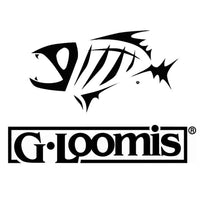
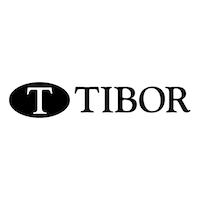
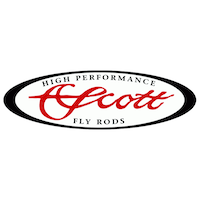
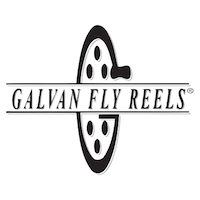


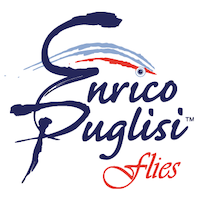
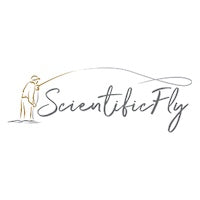
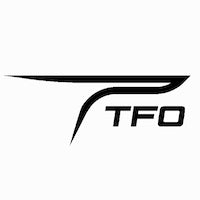

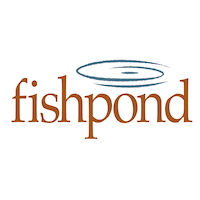
John David Mathews - December 13, 2021
Thanks for an exceptional article. I posted it to our fly fishing club’s FB page, Sea Island Fly Fishers.
I’ve tried and failed for 5 years to make the journey down to fish the shad run, this is the year. When I lived in NC I used to fish the run on the Roanoke River at Weldon but haven’t in some years now I now live in Beaufort SC. When I come down, I’ll stop in and and see you folks.
Thanks again,
John